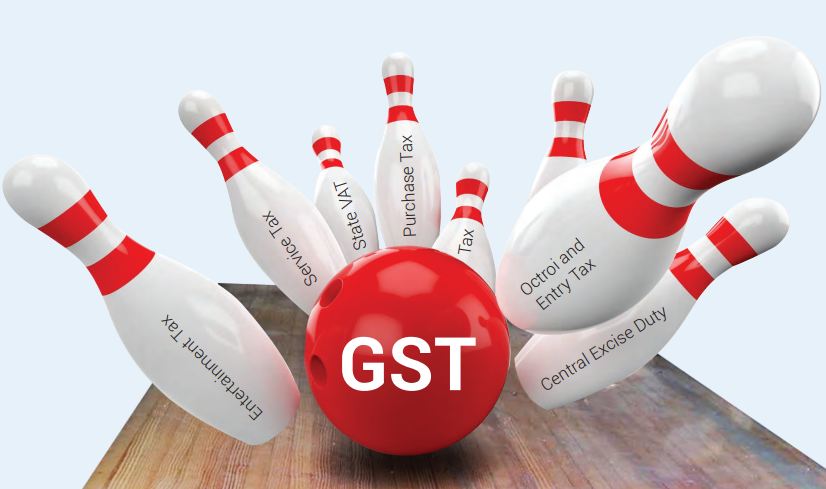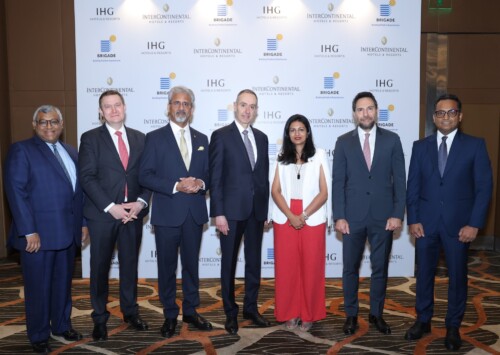Growth Curve
Biz@India
May 2018
Major reforms like demonetisation and GST brought the GDP to a three year low. However, the World Bank has stated that the Indian economy is projected to grow by 7.3 pc in 2018 and 7.5 pc in 2019 as it has recovered from the impact of demonetisation and rollout of the GST.
On October 8, 2016 Prime Minister Narendra Modi, announced that INR 500 and 1,000 notes will not be considered as legal tender. The government claimed that the move was taken to keep a check on black money and the action would crack down on illicit and counterfeit cash that was being used to fund illegal activity and terrorism. This sudden step created a chaos in the Indian economy, threatening economic output. The BSE Sensex and Nifty 50 stock indices fell over 6 pc on the day after the announcement. Just a few days later, the country faced severe cash crunch with people standing in long queues to exchange their bank notes.
By the time the country was trying to recover from demonetisation, the government took another major step in the year that followed in the form of Goods and Services Tax (GST). On July 1, 2017 finance minister Arun Jaitley announced that India will witness its biggest tax reform as he rolled out the GST bill in the parliament. He said that GST “over the medium to long term will lead to a rise in revenues of the Centre and states as the size of the formal economy will grow.”
Both the announcements came as a surprise and had dampening effects on the economy. The result of both these reforms was clearly visible when the Gross Domestic Product (GDP) growth came crashing down to a three year low of 5.7 pc in the first quarter of 2017-18. This was mainly because of pre- GST jitters and lasting effects of demonetisation. The economic growth in 2017-18 was estimated to slow to a four year low of 6.5 pc against 7.1 pc in 2016-17.
The After Effects
The economic survey 2017-18 said that demonetisation had led to USD 41 billion deficit in cash and USD 56 billion deficit in high denomination notes in the Indian economy. The survey acknowledged that the fight against corruption, which led to steps such as GST implementation and demonetisation, had affected informal cash intensive sectors in the economy. After GST was introduced it affected supply chains, especially those in which small traders (who found it difficult to comply with the paperwork demands) were suppliers of intermediates to larger manufacturing companies.
“Beginning March-April 2017 until September 2017, export growth decelerated while import growth accelerated sharply, a pattern not observed in other Asian emerging economies or the world as a whole. This suggests that the economy experienced a competitiveness impact in the demonetisation/GST periods,” the report further added.
In March 2018, the Centre sought the parliament’s approval to attain an extra spending of USD 12 billion. A large chunk from this amount was used to compensate states for revenue losses incurred due to the implementation of the GST. A research conducted by All India Manufacturers’ Organisation in 2017 showcased that 45 pc of people in trading organisations lost their jobs during the first few months of demonetisation. Additionally 35 pc of people in medium and small enterprises lost their jobs and 15 pc of workers in large companies also lost their jobs during the same period (October- December 2016). Unemployment continued to be a matter of concern later in 2017 as well.
Back on its Feet
However, recently a report by World Bank has stated that the Indian economy is projected to grow by 7.3 pc in 2018 and 7.5 pc in 2019 as it has recovered from the impact of demonetisation and rollout of the GST. The organisations bi-annual South Asia Economic Focus report further added that India’s recovery will help uplift South Asia as a region, making it the fastest growing region in the world.
“Both demonetisation and GST created short term disruptions in economic activity,” the report said. “As the inflation rate rebounded pushing real interest rates down, a recapitalisation plan for banks was announced and the effects of the two temporary shocks vanished and growth bounced back.” Even though with a positive growth that is favourable for the economy, job creation is still a major concern for the country. The report further added that to maintain its employment rate India has to create 8.1 million jobs in a year. The employment rate in India has been declining largely due to women leaving the job market.
Moody’s Investors Service, a financial analytics company in its global growth forecast for 2018 and 2019 released in February said that Indian economy is starting to recover from the negative impact of demonetisation and disruption caused by GST roll out, but kept GDP growth estimates unchanged at 7.6 pc for 2018 and for 2019 at 7.5 pc. “There are some signs that the Indian economy is starting to recover from the soft growth patch attributed to the negative impact of the demonetisation in 2016 and disruption related to last year’s rollout of the GST,” stated the forecast.
India Ratings, another rating agency said that the Indian economy is gradually coming out of the twin shock of demonetisation and GST which temporarily derailed growth. “Our research has shown that major macro parameters like manufacturing, capital goods production, non-food credit and consumption are showing signs of recovery,” India Ratings chief economist Devendra Pant said.
The twin action of demonetisation had a positive impact on income tax collection. The economic survey stated, “Government measures to curb black money and encourage tax formalisation, including demonetisation and GST, have increased personal income tax collections substantially (excluding the securities transaction tax). From about 2 pc of GDP between 2013-14 and 2015-16, they are likely to rise to 2.3 pc of GDP in 2017-18, a historic high.”
“Demonetisation and GST have resulted in increased filing of incometax returns and led to tax buoyancy in incovme-tax. These will provide the government more revenues to improve quality of life in rural areas. Thus government getting higher tax revenues will also be a growth and development driver in a larger measure. These structural reforms transform the structure of the economy and prepare it for an era of high growth. The changes made in the structure of the economy are now visible,” said Ansh Bhargava, director, Taxmann, one of the leading publishers of Tax and Corporate laws in India, while talking to Biz@India.
India is now the world’s sixth largest economy in the world at USD 2.6 trillion, displacing France, according to the database of the International Monetary Fund’s World Economic Outlook (WEO) for April 2018. The five economies ahead are the United States of America, China, Japan, Germany and United Kingdom.










